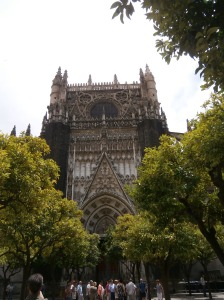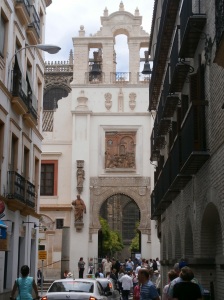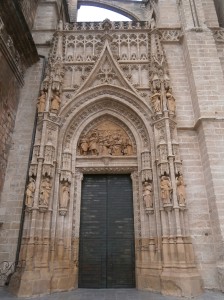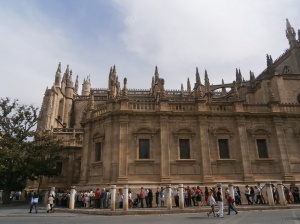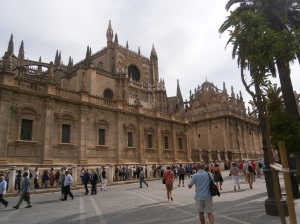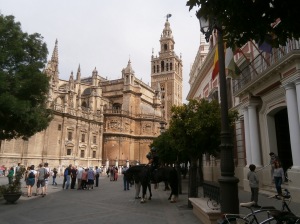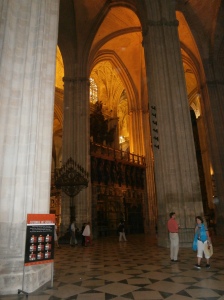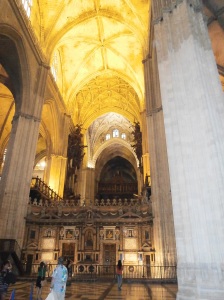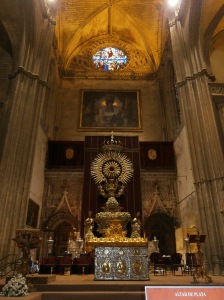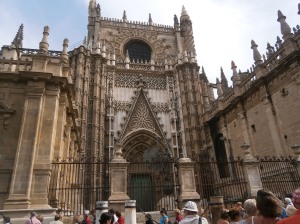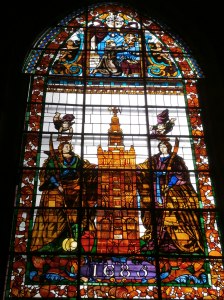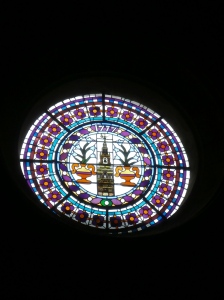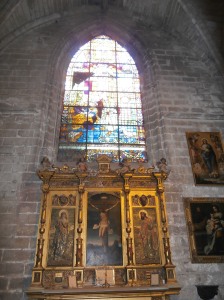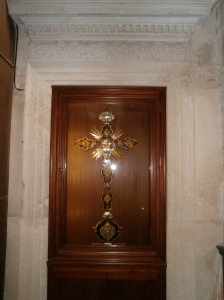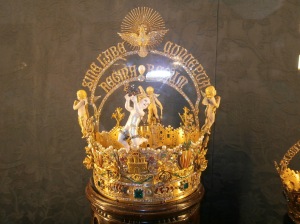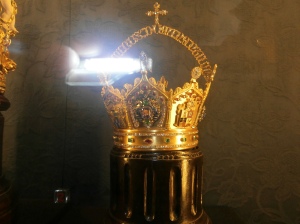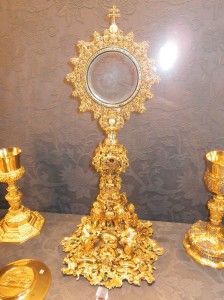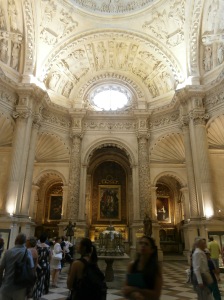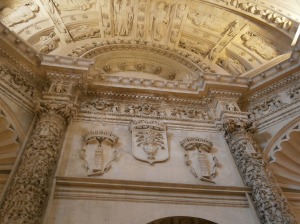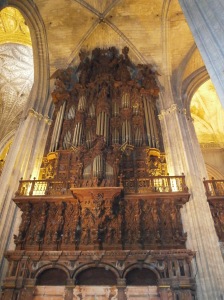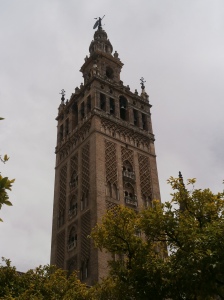As a little girl growing up in the United States I would always look at the academic calendar and see when the holidays were in the school year. School started in September and our first holiday was October 12th. It was called Columbus Day.
Years later I would be taught that Columbus was Christopher and he was credited with discovering the New World, namely the America’s. I was taught he was born in Italy so he was really an Italian Explorer but he was given his commission by the Spanish Government and he told them he was going to find the route to the East Indies (they didn’t have GPS in those days).
Columbus would stay on the periphery of my education and I would know as scant little about him as my teachers deemed it worthy for me to know, which as you can tell wasn’t much.
Today I sit in Torrevieja, Spain and statues to Columbus can be found in many cities in Spain. It was from here in the city of Granada that Columbus received his commission from the Spanish throne under Queen Isabella in the 15th Century. It was the discovery of this New World that helped to make Spain a world power. Spain was to dominate the world so inclusively that half of the known countries of the day would speak Spanish as their primary language and from North America to the tip of South America every country even to this day speaks Spanish, most as their primary language.

Statue in Granada, Spain depicting Columbus’ meeting with Queen Isabella in 1492, where he received his Royal Commission to sail to the East Indies, © Photo by Florence Ricchiazzi Lince
There is more however to the story of Columbus and as sometime happens when history is re-examined a more controversial figure of Christopher Columbus has emerged, if that was indeed his name.
The only thing historians agree on was that Columbus died on May 20, 1506 at the age of 54 in the city of Valladolid in Spain. Where he was born, who he really was and where he is buried have historians from around the world vying to unravel the mystery of Columbus.
Columbus was born sometime between October 31, 1450 and October 30, 1451. He was perhaps born in Genoa, Italy but might also have been born in Catalonia, Portugal, or another city in Spain.
Columbus was a self educated man learning Latin, Portuguese, and Castilian, with a love of reading about astronomy, geography, and history. Unfortunately, as he was self-taught, this also lent itself to Columbus making up his own version of facts and it was his interpretation of the Bible verse from the Second Book of Estrus which he used to explain to Queen Isabella that the route to Asia lay to the west. Columbus firmly believed that the size of the world was much smaller than it really was. He believed that the Eurasian landmass was far larger than it was and that the Asian continent was reachable from the east coast of China. He was wrong on every count.
Based on his interpretations of maps of the day Columbus told the Spanish Crown that the distance to Japan was only 3,000 Italian miles (2,300 statute miles). The correct figure was closer to 19,600km (12,200 mi). Scholars from the 3rd Century had known the true distance and European navigators from Columbus’ own time agreed that there was no ship from the 15th Century which could have carried enough food and fresh water for such a long journey. So desperate however were the Catholic Monarchs (Queen Isabella and King Ferdinand) to gain an edge over other Europeans countries that they believed Columbus’ claim that traveling west was the fastest way to reach the East Indies.
Even after landing in the Americas (in the Bahamas on October 12, 1492) Columbus stubbornly refused to accept that he had not in fact landed on any part of the Asian Continent.
During his voyages Columbus erroneously interpreted evidence that the Earth was not perfectly spherical, but rather bulged out like a pear around the new-found continent based on star rotation.
Columbus completed four voyages to the New World for the Spanish Throne. During one of his voyages the ship the Santa Maria ran aground and had to be abandoned. It was used for cannon practice and to show the locals the power and strength of the new conquerors. Never trained in the art of chivalry Columbus was more of a barbarian and he treated the locals of the Americas like a tyrant.

Columbus faces west as he meets with Queen Isabella and King Ferdinand. © Photo by Florence Ricchiazzi Lince
In 2006, located in the state archive of Valladolid Spain, was unveiled a 48 page document gathered during Columbus’ time as govern of Hispaniola. It details the torture and mutilation of colonials during Columbus’ time in office. It has also been recorded that when Columbus first landed in Hispaniola 60,000 people were living on the island and between 1494 to 1508, over three million people had perished from war, slavery, and the mines.
When Columbus died in 1506 he was buried in Valladoid, Spain. His body remained interred there until 1542 when it was transferred to the Dominican Republic. In 1795, when France took over the island of Hispaniola, Columbus’ remains were moved to Havana, Cuba. After Cuba became independent in 1898, the remains were believed to have been moved back to Spain. However, the people of the Dominican Republic now claim that they did not return the body of Columbus as previously stated, or they might have returned only a portion of his body. In June 2003 DNA samples of the remains in the Cathedral of Seville were examined and proof was received that the remains were Columbus’; or was it. Initial observations suggested that the bones did not appear to belong to somebody with the physique or age at death associated with Columbus. The amount of DNA also could only ascertain that the person buried shared the same mother as one of Columbus’ brothers. Hardly conclusive evidence that Columbus is buried in Seville. The Dominicans will not allow the remains in their crypt to have DNA testing done.
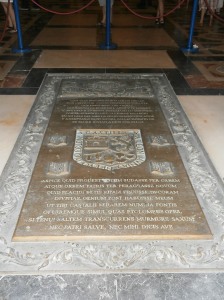
The tombstone inside the Cathedral of Seville where some believe the remains of Christopher Columbus have been buried. © Photo by Florence Ricchiazzi Lince
Contrary to popular accounts there are no known photos or painting of Columbus. The most famous one was completed in 1509 and therefore was not painted during Columbus’ lifetime. This lack of a portrait leads to the air of mystery and uncertainty as to who exactly was Christopher Columbus.
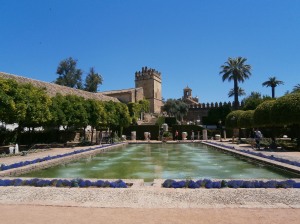
The beautiful Gardens of the Alcazar of Cordoba is where the Spanish Inquisition began and where Columbus met with the Queen and King before he departed for the East Indies. © Photo by Florence Ricchiazzi Lince
In addition to the atrocities attributed to Columbus one needs to include the following. Without Columbus opening trade between Europe and the Americas foods such as potatoes, tomatoes and corn would not have helped European countries to increase their populations. Without him wheat from Europe and the Old World would not have became a main food source for people in the Americas and coffee from Africa and sugar cane from Asia might not have became major cash crops for Latin American countries.
On May 14, 2014 word came that the lost Columbus hip, the Santa Maria, had been found in the waters off the coast of Haiti. The Santa Maria was the largest of the three ships used by Columbus during his first voyage. Will finding it again after all these years and exploring its secrets rewrite history once again?
After his death Columbus’ son Ferdinand claimed that his father was actually of Italian aristocracy. He described Columbus as a descendant of a Count Columbo. This fake history is now widely believed to be how Columbus ingratiated himself to the good graces of the aristocracy, was this an elaborate hoax to mask a humble merchant background, or something else…?
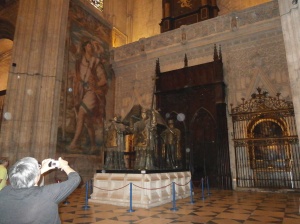
The formal tomb of Columbus in the Cathedral of Seville. © Photo by Florence Ricchiazzi Lince
So, was Columbus the greatest con man in history? Did he really know anything about navigation, was he really Italian or from Spain; was he of noble birth or merely merchant class; is he buried in Spain or has his body been cast to the four corners of the new world? I do not know the answers to these questions. I do know that based on my current research, and with the information that has come to light about Columbus and how he treated the indigenous of the New World I’m glad I hail from the United States of America, and not the United States of Columbus.
Florence Lince
http://about.me/florencelince
